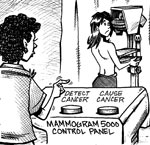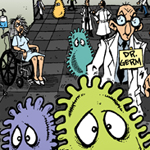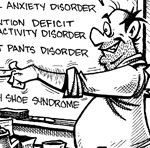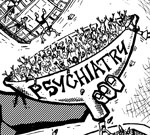Vitamin D Dosage - How Much Vitamin D Should I Take?
| Share on Facebook | Share on Twitter | Share on Google+ |
In the first half of the twentieth century, vitamin D was regarded as a wonder drug for preventing and treating the dreaded disease of childhood known as rickets. It was not unusual for children to be sent to work in factories as early as the age of eight for eight, ten, or even twelve hours a day, before sunup until after sundown. And even on those rare days these children might spend time in the sun, skies filled with soot and dust blocked the sun and deprived their bodies of vitamin D.
Preventing the very worst symptoms of vitamin D deficiency only required 200 IU of vitamin D a day. (An ounce of vitamin D is roughly 1,120,000,000 IU, and a gram of vitamin D is 40,000,000 IU.) This very, very small dosage of vitamin D was enough to prevent rickets—but just a little more is enough to affect the course of many other diseases.
Vitamin D Daily Dose for Immune Power
Finnish scientists, for example, have found that healthy adults who take at least 400 IU of vitamin D a day during the winter get fewer colds. That is still not a lot of vitamin D, but it is twice the 200 IU of vitamin D per day recommended for adults under the age of 50.
Vitamin D has also been found to reduce inflammation caused by yeast infections, to stimulate the immune system to fight bladder infections, and to help young lungs resist asthma. But what is the right dosage of vitamin D to prevent or support recovery from these conditions?
Vitamin D Daily Dose for Recovery from Deficiency
Researchers really don't know how much vitamin D our bodies need to fight infections or to prevent them from occurring in the first place. What is certain, however, is that if you have a vitamin D deficiency, you don't have enough vitamin D to fight infection.
Ideally, you should go to a doctor who is knowledgeable about nutrition and have blood tests for both vitamin D3, the storage form of vitamin D, and vitamin D2, the active form of vitamin D2. If you have adequate amounts of D3 but inadequate amounts of D2, then the problem is with a deficiency of a hormone made by your parathyroid glands, and that is a condition a doctor has to treat.
Parathyroid hormone problems, fortunately, are quite rare, and it's perfectly safe to treat vitamin deficiencies without blood testing as long as you stay far, far below the vitamin D daily dosage that can cause toxic overdose.
Since a vitamin D daily dose of 40,000 IU a day is the absolute minimum associated with toxicity, the US Institute of Medicine recommends 4,000 IU a day as an absolute maximum. You won't get sick if you take 10,000 or even 25,000 IU per day, but the lower recommended vitamin D daily dose makes sure you never have a problem with too much vitamin D.
How Much Vitamin D Should I Take?
People who do not have cancer can take up to 5,000 IU of vitamin D a day. People who have cancer should consult with their doctors about taking vitamin D, since the combination of cancer in the bones and vitamin D supplementation can cause a toxic buildup of calcium in the bloodstream. If you have taken 5,000 IU of vitamin D a day for a month, then lower your daily supplementation to 1,000 IU a day to prevent deficiency.
Selected Reference:
Laaksi I, Ruohola JP, Mattila V, Auvinen A, Ylikomi T, Pihlajamäki H. Vitamin D supplementation for the prevention of acute respiratory tract infection: a randomized, double-blinded trial among young Finnish men. J. Infect Dis. 2010 Sep 1;202(5):809-14.
-
Skin CareMen Skin Care
-
Free ResourcesFree eBooks
-
By creating an artificial environment, we're not stimulating our immune system enough. Germs are immune-stimulants. They challenge you to be prepared.Deepak Chopra
-
What We RecommendIf you do an analysis of the ingredients in a bottle of
 Total Balance and compare with other products you will find that it provides exceptional value for money…even against simple mass produced products with lower bottle costs.
Total Balance and compare with other products you will find that it provides exceptional value for money…even against simple mass produced products with lower bottle costs.
-



















